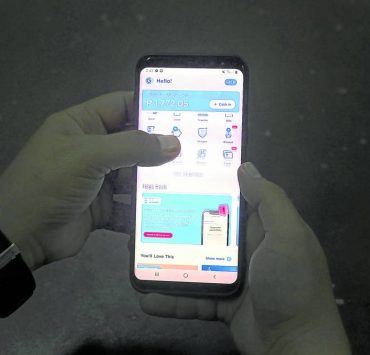Work-life balance–the CEO’s Holy Grail

The quest for a perfect work-life balance has become akin to the search for the Holy Grail—a noble but, perhaps, ultimately elusive goal. As CEOs and business owners, we are often at the forefront of this struggle, juggling the incessant demands of our businesses with the equally important needs of our personal lives.
The illusion of balance
It is becoming increasingly clear that the traditional concept of ‘work-life balance’ is an illusion, a mirage on the corporate horizon that distorts more than it clarifies.
The term suggests a perfect equilibrium, where work and life do not encroach upon one another, but rather exist in harmonious opposition. This idea, though attractive, is fundamentally flawed. The notion presupposes that work and life are two separate entities that can be neatly compartmentalized, when, in reality, they are deeply intertwined and often impossible to segregate completely.
The pursuit of this balance can lead to frustration and dissatisfaction, as the scales will inevitably tip too far in one direction at various points in our lives. I see this especially with business owners because the mental work, theoretically, never stops. There is no 9 to 5, or 8 to 8, it is 24/7.
‘On the field’ or ‘off the field’?
You need to know when it is ‘game time’ and you have to be full on, and when it is time to recharge. This is what I mean by ‘on the field’ and ‘off the field’. The business owner or CEO who brings home the same attack-mode energy from his business is under the illusion that it is always game time. The CEO who constantly dreams about his next vacation and golf game while he is in important business meetings is not yet fully ‘on the field’.
I was born in Germany. Germans have a saying: wenn schon, denn schon. This means: if you go for it, then go for it 100 percent. Don’t second-guess yourself or hold back. Otherwise, you are attacking with half your energy and will get below average results, at best.
Work-life integration
The concept of balance is inherently static, implying that once achieved, this equilibrium can be maintained with minimal effort. This static view does not account for the dynamic nature of life and work, where priorities and demands are constantly shifting.
Instead of striving for an illusory balance, a more practical and fulfilling approach is to embrace work-life integration. This concept acknowledges the fluidity between our work and personal lives and accepts that the two will overlap, interact and influence each other. It is about finding synergy between the different aspects of our lives, where work can be a meaningful and fulfilling part of our identity, not just a separate, time-consuming entity that needs to be balanced against ‘life’.
Work-life integration involves creating a lifestyle that allows for the realities of modern work—such as late-night emails, early morning calls and the occasional weekend work—while also making space for personal time, hobbies, family and health. It’s about making work and life coexist in a way that reflects our values, priorities and the realities of our individual circumstances.
Strategies for achieving harmony
Work-life integration requires a conscious effort to design our lives in a way that reflects what is truly important to us. Here are several strategies that can help:
1. Redefine success: It should not be measured solely by professional achievements or by how well we balance competing demands, but by how effectively we integrate our work with our personal values, passions and life goals.
2. Prioritize ruthlessly: Determine what is most important in both your personal and professional life and focus your energy there. This may mean delegating or saying no to certain tasks or opportunities.
3. Leverage technology wisely: It can be a double-edged sword. Use it to your advantage to automate tasks, streamline communication and manage your time more effectively. However, be mindful of its potential to encroach on personal time and set boundaries to ensure technology serves you, not the other way around.
4. Foster flexibility: The traditional 9-to-5 workday is increasingly becoming obsolete. Embrace flexible work arrangements that allow for different working hours and locations, as long as the work gets done.
5. Nurture your health: Physical and mental health are the foundation upon which work-life integration rests. Regular exercise, adequate rest, healthy eating and mindfulness practices are not luxuries but necessities for sustaining our ability to perform in all areas of life.
6. Build a supportive network: Surround yourself with people who understand and support your integration goals: family, friends, mentors and colleagues. They can provide assistance, advice and encouragement when the going gets tough.
7. Continuously reflect and adjust: Work-life integration is not a set-it-and-forget-it proposition. Regularly reflect on how well your current arrangements are serving your goals and be prepared to make adjustments as your circumstances and priorities evolve.
Our goal: Move closer to living lives that are not only successful in the conventional sense but also rich, fulfilling and aligned with our deepest values. There is no one-size-fits-all approach.
Take five minutes now to write down what could be a successful approach for you and start with that blueprint.
Tom Oliver, a “global management guru” (Bloomberg), is the chair of The Tom Oliver Group, the trusted advisor and counselor to many of the world’s most influential family businesses, medium-sized enterprises, market leaders and global conglomerates. For more information and inquiries: www.TomOliverGroup.com or email Tom.Oliver@inquirer.com.ph.
Tom Oliver, a “global management guru” (Bloomberg), is the chair of The Tom Oliver Group, the trusted advisor and counselor to many of the world’s most influential family businesses, medium-sized enterprises, market leaders and global conglomerates. For more information and inquiries: www.TomOliverGroup.com or email Tom.Oliver@inquirer.com.ph.


















